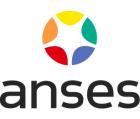
EURL
European Union Reference Laboratory for
rabies

♦ 04 July 2016 ♦
Dutch National Reference Laboratory
The Central Veterinary Institute (CVI) collaborates with public and private partners to safeguard animal and public health. CVI contributes to the prevention, eradication and control of animal infectious diseases through research, diagnostics and consultancy. By doing so, CVI helps to guarantee international trade and to preserve the international top position of the Dutch livestock industry. In 1904 we started as the National Serum Institute in Rotterdam. In 1959 this institute merged with the Governmental veterinary research institute (situated in Amsterdam) into the CVI. CVI is the national reference institute for notifiable animal diseases in the Netherlands. For these diseases CVI has an important and decisive task to determine the final diagnosis.
Rabies in the Netherlands
In the period from 1875 to 1923 several laws were installed to eradicate dog as well as sylvatic rabies in the Netherlands, leading to the official OIE rabies free status in 1923. In the period from 1974-1988 the free status was lost however, due to a reintroduction of sylvatic rabies through foxes from the east through Belgium and Germany. After 1988 the country regained it OIE free status but by then was confronted with a new phenomenon, European bat lyssavirus. Since 1987 a nationwide surveillance system was set up, and since then, over 5000 bats have been tested for EBLV, resulting in 377 cases of EBLV-1 in serotine bats and 5 cases of EBLV-2 in pond bats. Since that time the only classical rabies cases were import cases.
The last incident occurred in 2012 when a 8,5-week-old puppy was imported from Morocco. A day after arrival in Amsterdam the puppy showed aggressive behaviour and two days later suspicion of rabies arose and was confirmed by CVI. Over forty people were given post-exposure-prophylaxis and several contact animals were euthanized for rabies testing.
Picture: EBLV-1 and EBLV-2 cases in the Netherlands from 2004 to 2016
Laboratory and staff
Rabies diagnostics at CVI is performed by the Diagnostic Unit. All suspect cases, bats as well as larger mammals (mostly foxes and dogs) are tested by FAT and real-time RT-PCR. The FAT is ISO17025 accredited, as well as the EBLV-1 real-time PCR. Other PCR tests such as the RABV and EBLV-2 real-time PCR and several conventional PCR are extensively validated and run under ISO9001 standards. The Fluorescence Antibody neutralisation test (FAVN) is used for determination of antibody titres in pets as well as humans. These tests are performed by a team of technicians and staff to authorize results.
Since CVI has a 24/7 duty to perform rabies diagnostics in cases of direct contact of humans with suspect animals such as bats or sometimes foxes we maintain a minimum of eight people per team. Besides the diagnostics tasks, CVI has limited resources for rabies research. Besides phylogenetic analyses of all the positive bat cases and a study on molecular species determination we have been involved in several studies aiming at further analysis of bats in search of other potential zoonotic viruses. In 2012 we co-authored a paper on bat Coronaviruses in the Netherlands and to date we are involved in a study on the Dutch ABC islands (Aruba, Bonaire and Curacao).
Contacts
E.A. (Bart) Kooi, Ph.D.
Projectleader Rabies and Biosafety Officer
Central Veterinary Institute of Wageningen UR
Houtribweg 39, 8221 RA Lelystad
e-mail: bart.kooi@wur.nl
Internet: www.cvi.wur.